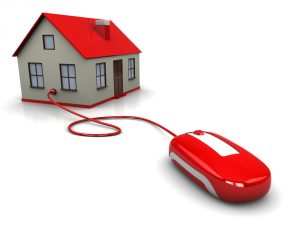We’re really just on the cusp of smart home technology
 Today’s homes are becoming smarter and smarter, thanks to embedded technologies. While we’re a good way off from talking homes with their own personalities -- popularized on television and in the movies -- they can do amazing things.
Today’s homes are becoming smarter and smarter, thanks to embedded technologies. While we’re a good way off from talking homes with their own personalities -- popularized on television and in the movies -- they can do amazing things.
Our homes can keep out burglars, conserve energy, control temperature and humidity and even make our morning coffee, all with little input from us. Interestingly enough, today most of those functions are independent of one another. Our "smart" homes are really a collection of decentralized smart devices, all of which make modern living easier and more comfortable.
Here’s a look at a number of the most common smart components you’ll find in today’s homes:
Security systems. There was a time when security systems were primarily a unified whole. You hired a security company to come into your home and install various pieces. The system is then monitored by the security company, which alerts authorities in the event of an emergency.
While such systems are still available, it’s becoming more and more practical to create your own security system from individual components. There are all sorts of security devices powered by embedded processors that you can use, such as:
- Window and door sensors
- Glass break sensors
- Wireless cameras that work via your home’s WiFi network
- Motion-sensitive cameras
- Motion-sensitive lighting
And that’s just to name a few. You can pick up these pieces bit by bit, and many of them can actually be controlled via a WiFi connection to your smartphone. Others require you to use a personal computer as your control panel, but in many cases those implementations can also be controlled or viewed from your smartphone via a web-based interface.
Lighting. There are plenty of gadgets and devices you can use to control the lighting in your home, as well. Some of these systems hook into your circuit breaker, and control your home’s entire electrical system; others are standalone devices that might control a single lamp or an outlet.
Here again, many of these systems can be managed via a smartphone app.
Heating and cooling. Programmable thermostats were a significant advancement in terms of controlling your home’s temperature. Some of today’s programmable thermostats offer a WiFi control interface. You don’t even have to be in the home to change the temperature; you can log in to a web management console hosted on your computer via your smartphone. This enables you to change your home’s heating or cooling settings on the road, which can come in very handy when you’re travelling.
Home theater systems. There are an increasing number of entertainment systems vendors that are building their devices with WiFi capability. For example, you might be able to use a specific TV with wireless. You just download the manufacturer’s smartphone app and you've got a remote control that isn't likely to get lost in the couch cushions or run out of batteries.
Other devices are starting to appear in this category as well. Most often we’re seeing Blu-Ray players, but there are stereos on the market that take advantage of this kind of technology, too.
Appliances. Programmable coffee makers are some of the most common examples of technology that could be considered "smart home" technology. Of course, we've had these kinds of devices for years. Still, newer generations offer more features, and more and more appliances are becoming "smart".
For example, consider the "smart" refrigerator. This refrigerator allows you to keep track of your food on hand via a touchpad interface on the front of the appliance. When you’re low on something (let's say you use the last of the milk) it can automatically send you an SMS message or email that lets you know to add it to your grocery lists. Some versions of this appliance actually create and print a grocery list for you, with the necessary items marked.
There are more appliances like this on the marketplace and in development. For example, imagine being able to remotely turn off your oven 20 minutes after you’ve left the house and realized that it was still on.
We’re really just on the cusp of smart home technology. While some smart home solutions seem to be ripe for integration and centralization, for many families it makes sense to take a more decentralized approach. In fact, this may well be the trend for the future, with the smartphone or the computer taking the place of the centralized control panel.
Photo Credit: mmaxer/Shutterstock
Nick Simpson is Social Media Coordinator at Kontron, a leading designer of the box PC as well as rugged systems. Kontron caters to a number of industries including the energy, military and medical industries.
